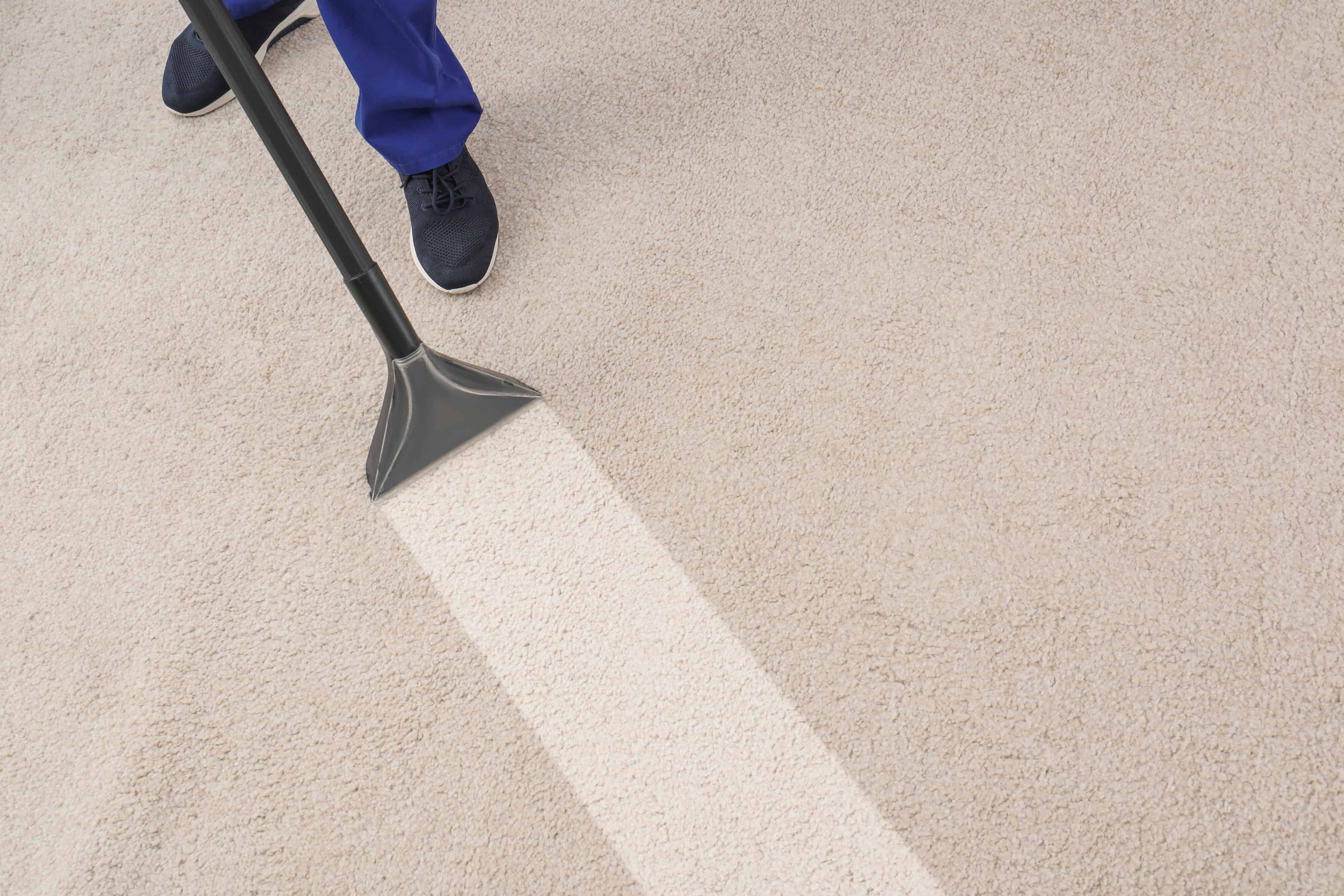
If you recently experienced any kind of water damage to your home, be cautious – a remaining odor could do more than simply stink. Lingering water damage smells could indicate the continued growth of mold or mildew, which thrives in damp conditions. Protect your carpets and your health by learning how to properly eliminate odors after water damage in your home safely, using these tips from ServiceMaster Restore.
How to Get Rid of That Mildew Smell
Getting rid of a mildew smell in your carpet may seem like a challenge, but it's actually pretty simple to do. The first step is to make sure that the source of the water damage smell has been fully dealt with so that any mold or mildew causing the issue doesn't continue to spread. Consider calling mold remediation experts to inspect and address any lingering leaks or mold issues for you, since handling it on your own can be dangerous. Once you have addressed the original water damage and mold issues to prevent regrowth after cleaning, follow these steps to get rid of or prevent a mildew smell in your carpet:

- Completely dry the affected area. If the room has windows, keep them open for several hours to distribute fresh air and speed drying. Dehumidifiers help remove moisture from both the air and your carpet fibers. Floor fans also increase air circulation and pointing the airflow directly on your carpet will accelerate drying time.
- Treat the carpet with a cleaning solution. Mix one cup of vinegar and 2 cups of warm water in a spray bottle. Gently spray the solution onto areas of the carpet that smell. Be sure not to oversaturate the area since this can trigger more mold to grow.
- Pour baking soda over the treated areas. Baking soda quickly absorbs odors and is safe to use around children and pets. Allow ample time for the baking soda to absorb any leftover moisture or odors, preferably overnight, and then vacuum it – and the smell – right up.
If you still sense a mildew smell after cleaning the carpets in your home, try freshening the air, as well. All three of these common household items help absorb bad smells in the home:
- Vinegar: place bowls of white vinegar around the room to quickly lift the odor out of the area. In a couple days, your home will smell as good as new.
- Cat litter: place small, open containers of clean cat litter throughout the room. Change the litter regularly, and it should absorb most of the odor over time. Tip: don't try this method at home if you already live with cats – they'll think they have extra places to go to the bathroom!
- Baking soda: like cat litter, baking soda can quickly and easily absorb foul water damage odors when placed in open containers around the room and changed regularly.

Once you've taken care of the source of your water damage, prevented the spread of mold and mildew and thoroughly cleaned your carpets, your home should smell fresh and free of foul odors. If the smell returns or you think you need professional help to deal with the damage, contact the experts at ServiceMaster Restore®. We have advanced deodorization tools and techniques to eliminate odors from your home so you can breathe easy again, plus comprehensive mold remediation services that can help keep you and your family safe.
Important Facts About Mold
Most schoolchildren learn about mold in science class, in particular Penicillium, the mold from which penicillin is derived. Everyone has seen green, fuzzy mold on breads, fruits, or other foods at one point in time. But what about the mold that develops along the grout in a bathroom or on a basement wall? Mold in the home can cause material and structural damage, but it can also be a health hazard.
Do you know your mold facts? The mold remediation professionals at ServiceMaster Restore have compiled several facts about mold everyone should know:
- Mold needs moisture to grow. Outdoors, mold grows in the soil, on vegetation and on decaying materials. Indoors, mold thrives in damp, moist conditions like bathrooms, basements or even behind the drywall when there's been water damage.
- Mildew is mold. That white-gray, powdery stuff that sometimes appears on the leaves of plants is mildew, an early stage of mold.
- There are four common types of indoor mold: Alternaria, Aspergillus, Cladosporium and Penicillium.
- Often, mold found in a home appears greenish-gray, brownish-green, gray, and even black. You may find slimy green mold on the exterior growing on vinyl siding located in an area that receives little to no sun. This mold usually can be removed with a power washer.
- Some mold spores do contain toxins that can cause health issues when inhaled. People with mold allergies, pregnant women, anyone suffering from asthma, has a compromised immune system or respiratory conditions shouldn't be exposed to mold. This is why mold remediation by professionals is essential.
- The terms "toxic mold” or “black mold" refer to Stachybotrys chartarum. Typically, it's greenish black in color and develops after a space has suffered heavy water damage. It, and all other kinds of mold, needs to be removed safely by professionals trained in mold removal.
- Mold on a shower curtain or in the tile's grout around a tub can be removed by a homeowner. Bleach removes mold but remember to only use it in a room that's well-ventilated. Also, some types of tiles will etch with bleach contact, so make sure to spot check the bleach before using around the entire tub.
- Running a bathroom fan can help reduce the development of mold in the room. Open glass shower doors to allow ventilation and never bunch a shower curtain, instead keep it open so it can dry thoroughly. Remember, mold needs moisture for growth.
- A musty, mildew-y smell in the basement is not natural. It's likely mold due to water damage, a cracked foundation, or leaking pipes.
- Condensation on windows, walls and other hard surfaces is a sign of high humidity in the home, which increases the risk for mold development.
- After a water damage event (flood, burst pipe, firefighting efforts), mold can begin to grow as soon as 24 to 48 hours.
- After a home flood, mold can grow in many unseen places including behind drywall, within insulation, on carpet padding and even throughout the HVAC system.
Recommended Further Reading
Don't stress on how to get that smell out of your carpet. If you have more questions about how to eliminate odors after water damage, read our Frequently Asked Questions section. You can also call us at 1-800-RESPOND.
